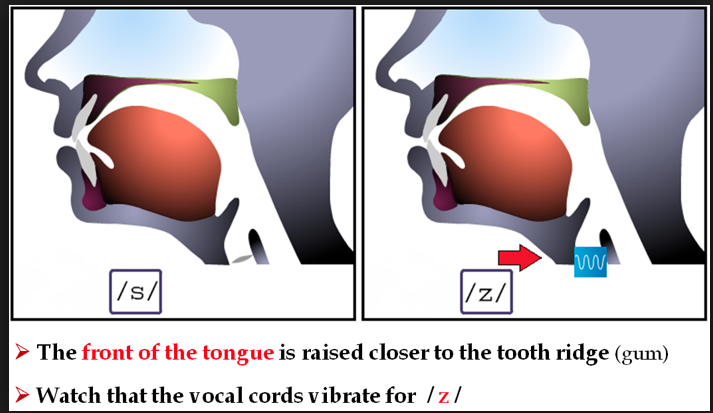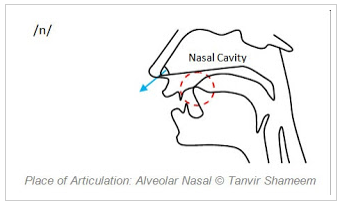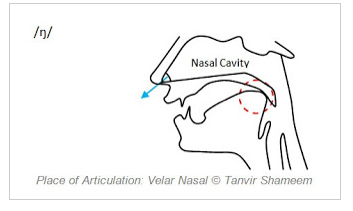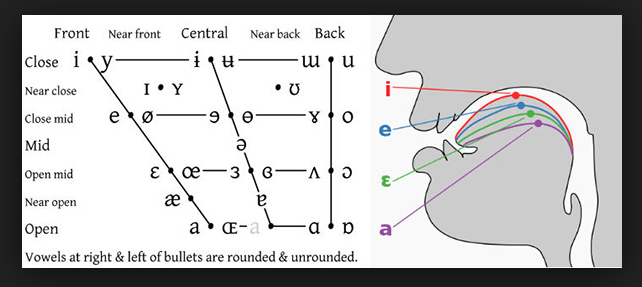|
Words that end in “n” and “ng” can be difficult for some people to differentiate, especially those whose native language is Mandarin. Both sounds are made by closing off the path of the air in the mouth. The difference is that the "n" sound is made with the tip and blade of the tongue pressed against the roof of the mouth at the ridge behind the teeth (see illustrations below) and the "ng" sound is made with the back of the tongue pressed against the roof of the mouth in the middle back of the palate. Try saying "t" and then "n" to feel the location of the tongue in the front of the mouth. Now try saying "k" and then "ng" to feel the tongue in the back of the mouth. Listen to the recording below, and try saying the words with contrasting sounds at the end. Want to see more video tips? Subscribe to our free online practice.
0 Comments
English prepositions have specific meanings in some contexts (out: from the inside to the outside of something), but how do you know which preposition to use in a verb phrases? Errors in prepositions are common for non-native English speakers, because they are idiomatic and don’t necessarily follow a logical pattern. Beyond memorizing, how can you figure out which word to use? Don't stress out, there are ways to figure out what's up. Over the long run, reading, listening for prepositions when talking with native speakers or watching tv or movies, and practicing their use will get you most of the way. When you learn a new verb, adjective or noun, find out which prepositions are used with it and learn them as well. When you encounter an immediate question, ask a native speaker, or use a learner’s dictionary that lists the prepositions together with the word in question. Some useful resources are Longman Dictionary of Contemporary English, the Oxford Advanced Learner’s Dictionary and the Collins Cobuild Dictionary. Online, you can use http://www.learnersdictionary.com/ or http://www.ldoceonline.com/ to help you know which is the correct preposition. Don't worry, you'll get the hang of it in no time!
 A common issue for non-native English speakers is the pronunciation of words that end in the letter “s.” Written words can lead us astray, as letters stand for different sounds in different contexts. When a word ends with the letter “s,” it is frequently pronounced with voicing, or what we think of as the “z” sound. Here are some guidelines for knowing when to say “sss” and when to say “zzz.” The word ends with “ss”: Pronounce “sss.” Examples: glass, across, less, miss The word ends with “ce”: Pronounce “sss.” Examples: ice, face, space The word ends with “se”: These words are split. For some, pronounce “zzz.” Examples: because, these, close For others, pronounce “sss.” Examples: house, goose, lease When in doubt, use your online dictionary resources to listen to the correct pronunciation of the word. The word ends with “s”: These words are split. For most, pronounce “zzz.” Examples: is, was, has, says, goes For some, pronounce “sss.” Examples: us, yes When in doubt, use your online dictionary resources to listen to the correct pronunciation of the word. For plurals, the “s” or “z” sound depends on the voicing of the letter preceding the “s.” So the word “goods” has a “z” pronunciation, because the “d” is voiced. But the word “gets” has an “s” pronunciation because the “t” is voiceless. Accented speech always contains vowel errors. Vowels can be tricky to correct, because they do not have obvious placement targets for your mouth. We also have to overcome the mapping in our brains. We actually hear a different vowel than is being spoken when we listen to a foreign language. This is because our brain likes to sort the vowel sounds into our own familiar sound system. When learning American English, it is helpful to create word sets and re-organize how we hear vowels. A good place to start is to listen to the vowels by themselves. You can find recordings of words and isolated vowel sounds online. Check out this handy chart with recorded vowel sounds created at the University of Kansas.
 Every accent has its own distinct character, but often one of the elements that can make you hard to understand has to do with the ends of words. In American English, we usually pronounce sounds at end of a word, unless the word ends with a silent “e” (such as in the words name, goose, slice) or the word has been adopted into English from a foreign language (such as the words bourgeois, gourmet). A common error found in many foreign accents is de-voicing final consonants (for example, saying “bet” instead of “bed”), saying the final sound of the word too softly or leaving it off entirely. This error can be compounded by the speaker’s lack of confidence and desire not to call attention to his or her accent. Practice reading aloud, and slow down enough to say all of the sounds you see in the written words. You will feel your mouth moving more than you are used to. Next, try having a short conversation using this same technique. You may find that people can understand what you are saying better because you are putting the end sounds on your words. |
Subscribe to this blog:
Categories
All
Archives
March 2021
Copyright 2020
Christine Dunbar Have Questions?
Get A Free Consultation We offer a free 30-minute phone consultation. Schedule yours now. |







 RSS Feed
RSS Feed



